Does our health threaten?

The accident turned Seveso into Chernobyl of dioxin spills. The disaster had a great influence on local society: some suffered respiratory, skin and some even cancer problems.
Since then, the toxicity of dioxins has also generated fear in local society, although, according to experts, it is not scientifically justified. Dioxins are toxic, there is no doubt about it, but do not forget that in toxicology everything is relative: the effects of toxic compounds always depend on the dose. Therefore, dangerous dioxin produces high concentrations.
Dioxins and cancer
To find out if dioxins emitted by incinerators can cause disease, experts have found an obvious difficulty: it is difficult to accurately measure the amount of dioxins present in the atmosphere. They occur in
extremely small concentrations, in piccograms, that is, a billion times less than a gram.

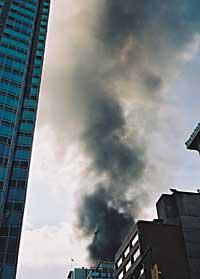
On the other hand, there is an obvious ethical difficulty for research. A lab rat can easily be given toxic products to see how the disease evolves. Testing with humans is not legal. The only possible approach is the epidemiological study of populations that have been in contact with toxins as a result of an accident. For example, seveses. However, in these cases it is difficult to interpret the results, since each patient's diet, smoking tobacco and the industrial polygons around them can also have a significant influence.
Therefore, although there is a strong suspicion that dioxins called 2,3,7,8-TCDD are carcinogenic to humans, all experimental investigations to date have been conducted with laboratory animals. From there it has been assumed that the effect on the human being will be the same, but it must be borne in mind that a great difference has been observed between animal species. Therefore, it cannot be considered fully tested.
Risks of old incinerators
In view of the limitation of laboratory tests, studies have also been carried out in populations around incinerators, with an increase in hormonal changes, cancer cases and respiratory problems. Especially among those living less than 10 kilometers from the incinerator. It is not clear, however, whether nearby industrial areas have also been affected. Despite doubts, the World Health Organization has decided to include dioxins in the list of carcinogenic compounds.
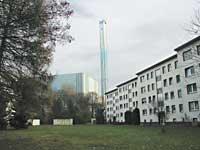
The large amount of dioxins poured in the Seveso accident also influenced the sex of children: among newborns the usual proportion between girls and boys was not maintained. More girls were born than boys. In general, boys account for 51% of newborns in the world, but in Seveso only 38% of the twenty years after the accident.
New incinerators
However, it is difficult to know the health impact of current incinerators, since in recent years technology has been greatly improved to prevent the emission of toxic substances into the atmosphere. For example, in Catalonia, according to the study carried out around the incinerator of Montcada, only 6% of the dioxins breathed by the population comes from the incinerator.
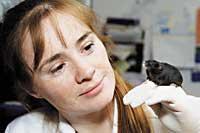
But to those who claim that the new incinerators do not generate health problems, José María Tallón, family doctor of the Health Center of Errenteria, has responded rigorously: “It is very difficult to see if damage occurs with the new incinerators. Imagine that adults spend more than 10 years to develop cancer. In the Netherlands, in 1973, we began to investigate the malformations that dioxins can cause in fetuses and the result was published in 2000. Therefore, those who say that modern incinerators have no danger are failing. You can’t say that yet!”
Iñigo Legorburu, an air pollution chemist at the University of the Basque Country, has also expressed concern: “Society has to demand that what is really going to be emitted into the atmosphere be accurately controlled and that this data be made available to anyone” José María Tallón is concerned about this. Filters used to prevent the release of toxic substances slow the combustion of waste. “We know that some incinerators at night secretly remove the filters to make the burning faster,” says Tallón. After all, they save a lot of money.”
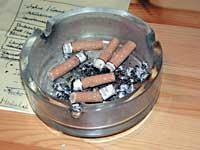
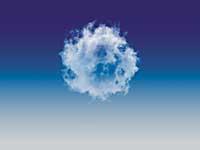
However, the environmental advisor, Xabier Garmendia, does not believe this to happen: “All combustion values will be monitored for 24 hours and this information will be received by both the incinerators themselves and the administration. Six times a year, stricter controls and measurements will be made.”
No emission to the atmosphere
But the controversy does not end here. In addition to dioxins, other toxic waste such as furans, acid gases and heavy metals are generated in the process of burning waste. However, the toxicity of dioxins has not yet been properly analyzed, much less that of other pollutants. It cannot be said what effect mercury or arsenic emitted by incinerators will have on human health.
Incineration advocates say that the current incinerators will emit so little to the atmosphere, the filters are very efficient. But we know they will be created. And if they are not poured into the atmosphere they will remain in ashes and dross, as well as toxic. This has generated, therefore, another debate: What is done with all those toxic ash and solid waste?
One of the most lethal artificial compounds

2,3,7,8-TCDD is the best known of all dioxins. No wonder, because that is the most dangerous of all: if we give a single microgram to an animal, that is, a million grams, it dies. Due to its toxicity, it is one of the most lethal man-made artificial compounds.
This does not mean that in nature there are no substances as toxic as this. Toxins produced by many living beings are much more lethal. Examples of this are the toxin produced by the microorganism Clostridium botulinum, which produces botulism or that produced by Clostridium tetan.
Build up in the body Dioxins do not mix well in water, but they dissolve better in oil, in fats. Therefore, when we breathe contaminated air or receive it through food, dioxins accumulate in the adipose tissues of the body. The consequence is serious: the organism hardly metabolizes and in no case can expel it from the body. We have been with us for many years. |
In two words
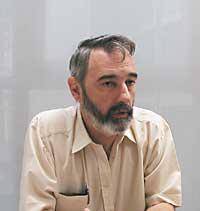
at the Faculty of Chemistry of the UPV and researcher of air pollution.
“Technology has changed a lot in recent years. The old European incinerators did not have a smoke treatment system and emitted 90 micrograms of dioxins into the atmosphere to burn a ton of garbage. However, the current ones emit only 1.5 micrograms. That is, 60 times less.”
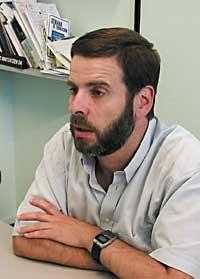
doctor at the Errenteria Health Center
“The Directorate of Public Health indicates that blood tests will be performed among the population living in the incineration facility environment. But blood tests are useless. To begin with, because dioxins accumulate in fat, not in blood.” “We
don’t know what they are going to do with the toxic ashes that are generated in combustion. In Germany, for example, they were used in civil works as a building raw material. But they realize that they are not inert.
Over time they erode, dust breaks out. Therefore, they are not safe and have stopped using them in construction. Now these toxic ashes only accumulate.”
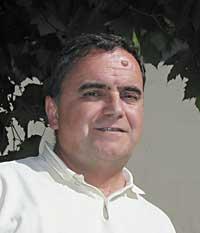
Industrial Engineer
“Thanks to current regulations, incinerators can emit very few dioxins to the atmosphere and water. “According to the available data, of the dioxins and furans generated in incinerators, 1% comes from the chimney, 18% remains in slag and
80% in ash.”
Size matters The size of particles emitted into the atmosphere also has to do with toxicity. When the smoke leaves the chimney of the incinerator, particles of different sizes are emitted into the atmosphere: the larger ones fall to the ground by themselves; the smaller particles, those of less than 0.1 microns, stay dancing in the atmosphere in continuous movement, colliding between them. These collisions accumulate medium-sized particles: 0,5-2 microns. “breathable” size for our lungs. And if the respiratory system is designed to protect itself from large particles, we have a special mucosa and hairs in the nose. Larger particles of the atmosphere, from 5 microns onwards, quickly close the way to the lungs. The bronchial mucosa then closes at 2 microns. The smaller particles, on the contrary, of less than 0.5 microns, penetrate to the bottom, but being so small, they are taken out without causing damage. Therefore, the most dangerous particles are medium-sized particles, which enter directly into the alveoli and cause respiratory problems, although in origin many of these compounds were not toxic. It has taken many years to prove that these particles generate health problems, but today pollution researchers give them special importance. Newer incinerators emit 30 grams of particles per ton of chimney garbage. Knowing the tons of garbage that will be burned in our case, it will be a factor to consider. |





